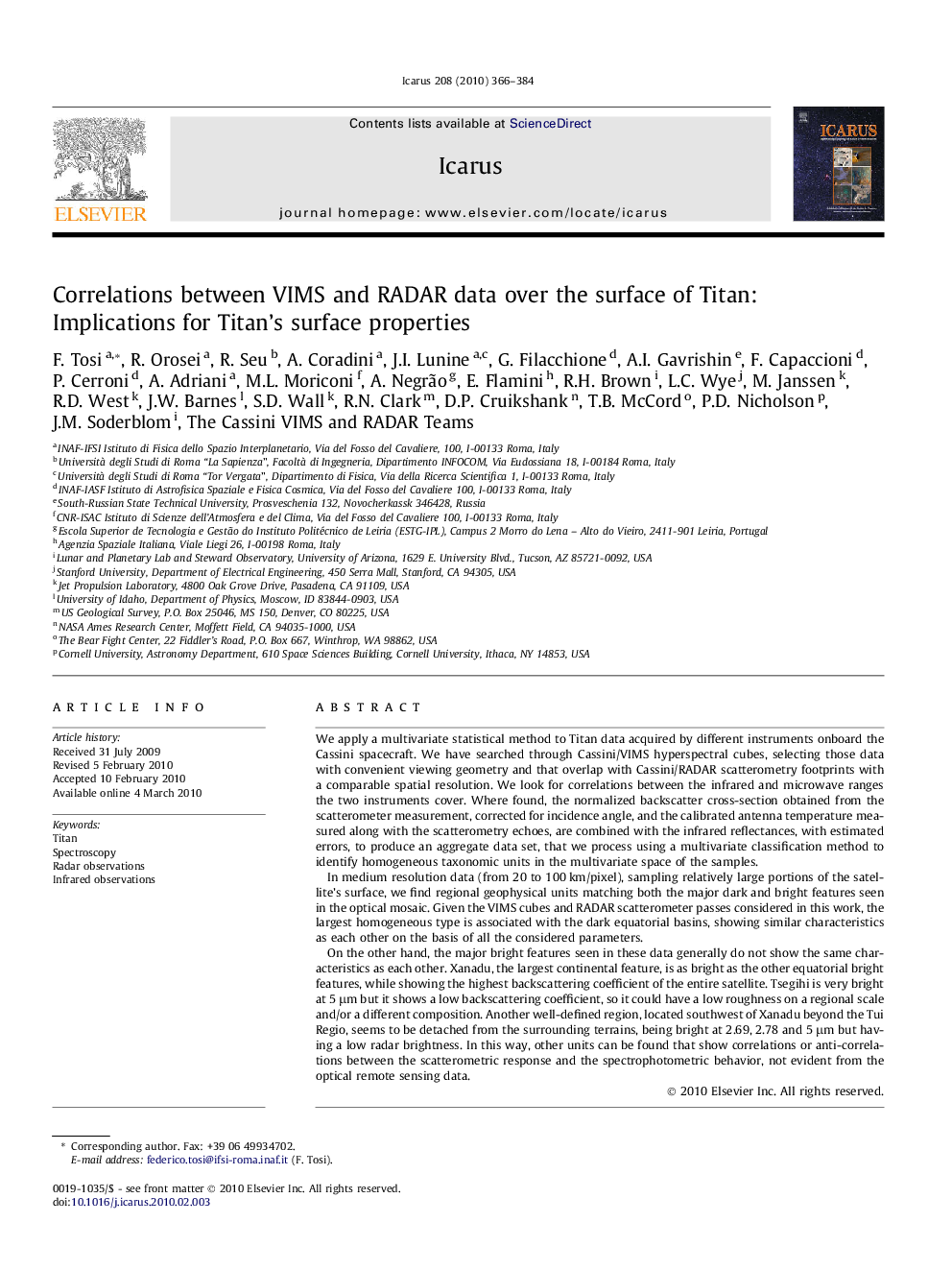| کد مقاله | کد نشریه | سال انتشار | مقاله انگلیسی | نسخه تمام متن |
|---|---|---|---|---|
| 1774685 | 1021171 | 2010 | 19 صفحه PDF | دانلود رایگان |

We apply a multivariate statistical method to Titan data acquired by different instruments onboard the Cassini spacecraft. We have searched through Cassini/VIMS hyperspectral cubes, selecting those data with convenient viewing geometry and that overlap with Cassini/RADAR scatterometry footprints with a comparable spatial resolution. We look for correlations between the infrared and microwave ranges the two instruments cover. Where found, the normalized backscatter cross-section obtained from the scatterometer measurement, corrected for incidence angle, and the calibrated antenna temperature measured along with the scatterometry echoes, are combined with the infrared reflectances, with estimated errors, to produce an aggregate data set, that we process using a multivariate classification method to identify homogeneous taxonomic units in the multivariate space of the samples.In medium resolution data (from 20 to 100 km/pixel), sampling relatively large portions of the satellite’s surface, we find regional geophysical units matching both the major dark and bright features seen in the optical mosaic. Given the VIMS cubes and RADAR scatterometer passes considered in this work, the largest homogeneous type is associated with the dark equatorial basins, showing similar characteristics as each other on the basis of all the considered parameters.On the other hand, the major bright features seen in these data generally do not show the same characteristics as each other. Xanadu, the largest continental feature, is as bright as the other equatorial bright features, while showing the highest backscattering coefficient of the entire satellite. Tsegihi is very bright at 5 μm but it shows a low backscattering coefficient, so it could have a low roughness on a regional scale and/or a different composition. Another well-defined region, located southwest of Xanadu beyond the Tui Regio, seems to be detached from the surrounding terrains, being bright at 2.69, 2.78 and 5 μm but having a low radar brightness. In this way, other units can be found that show correlations or anti-correlations between the scatterometric response and the spectrophotometric behavior, not evident from the optical remote sensing data.
Journal: Icarus - Volume 208, Issue 1, July 2010, Pages 366–384